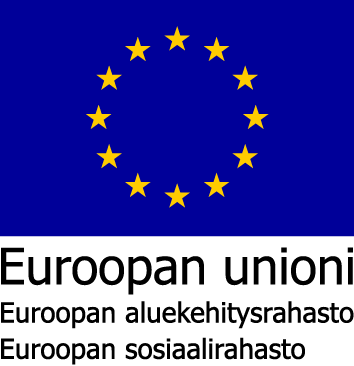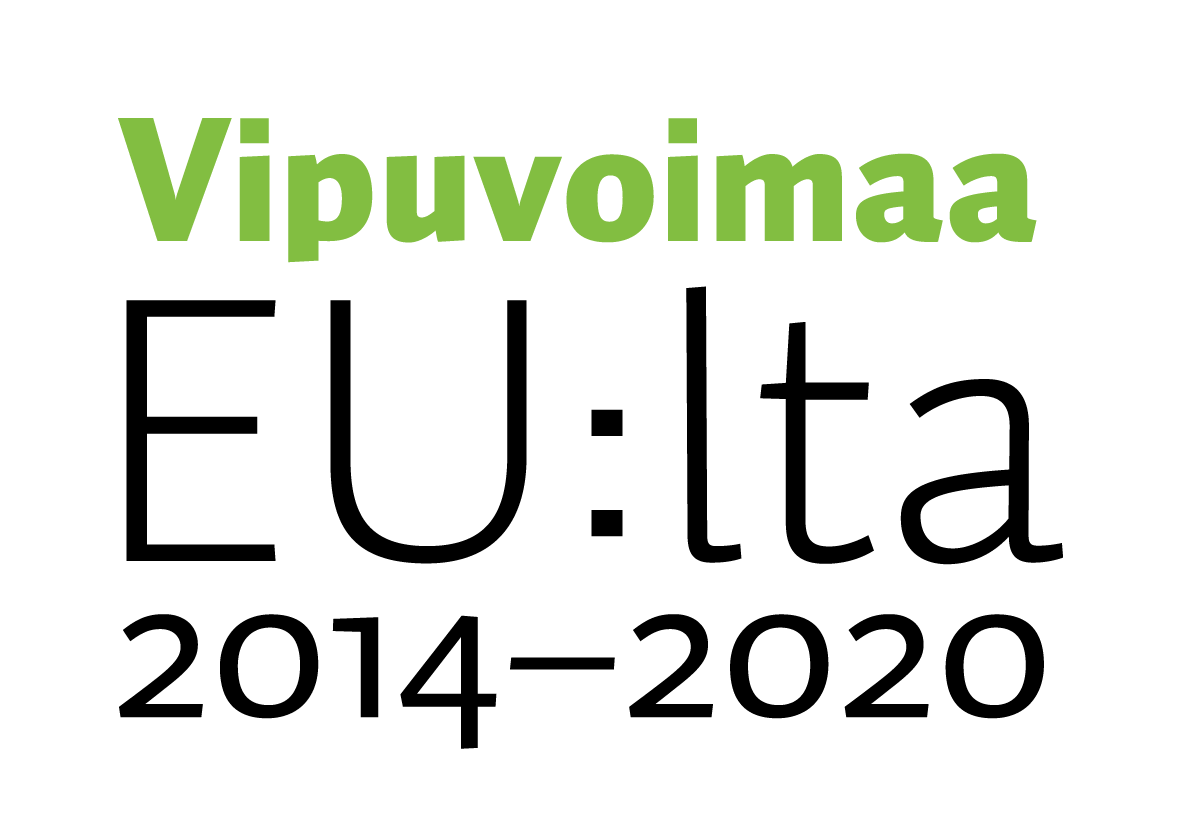

 |
 |
Hankekoodi: S22844
Hankkeen nimi: Toiminnan ja prosessien tarkastelu digitalisuus huomioiden
Toimintalinja: 9. REACT-EU:n ESR-toimenpiteet
Erityistavoite: 12.3. Digitaalisten taitojen parantaminen
Suunnitelman mukainen toteutusaika: Alkaa 1.8.2022 ja päättyy 31.12.2023
Toiminnan tila: Toiminta päättynyt
Vastuuviranomainen: Etelä-Savon elinkeino-, liikenne- ja ympäristökeskus
Hakijan virallinen nimi: Joensuun kaupunki
Organisaatiotyyppi: Kunta
Y-tunnus: 0242746-2
Jakeluosoite: Rantakatu 20
Puhelinnumero: 0132677111
Postinumero: 80100
Postitoimipaikka: JOENSUU
WWW-osoite: http://www.joensuu.fi
Hankkeen yhteyshenkilön nimi: Penttinen Pekka Olavi
Yhteyshenkilön asema hakijaorganisaatiossa: Tietohallintopäällikkö
Yhteyshenkilön sähköpostisoite: pekka.penttinen(at)joensuu.fi
Yhteyshenkilön puhelinnumero: 0505923759
Hakijoiden lukumäärä tai tuen siirto -menettely:
Hankkeessa etsitään juurisyitä sekä selvitetään kuinka kaupungin palveluita on mahdollista parantaa ja tehostaa erilaisilla toimenpiteillä. Tarkastelussa digitaalisuus on vahvasti mukana ja sen mahdollisuuden huomioidaan palveluiden kehittämisen yhteydessä. Työntekijöiltä toistuvasti saadun palautteen mukaan työn mielekkyys kärsii erilaisten hallinnollisten prosessien ja muiden työhön liittyvien toistuvien tehtävien johdosta. Erilaisista keskusteluista ja selvitysyrityksistä huolimatta työnantajan on ollut haastava vaikuttavasti kehittää työprosesseja ja järjestelmiä siten, että työntekijöiden turhautuminen ja heidän kokema työkuormitus olisi selkeästi vähentynyt. Tavoite on vapauttaa työntekijöiden aikaa välittömään asiakastyöhön, yksinkertaistaa lisäarvoa tuottamattomia työvaiheita ja siten varmistaa, että työntekijät saavat entistä enemmän käyttää työaikaansa ammatti-identiteettinsä mukaisiin työtehtäviin. Tätä kautta myös työhyvinvointi paranee sekä Joensuun kaupungin pitovoima kasvaa.
Lisäksi hankkeen aikana on tarkoitus ottaa kaupungin henkilöstön käyttöön digitaalinen oppimisympäristö, johon on koottu henkilöstön keskeiset koulutusmateriaalit siten, että niiden suorittamista voidaan seurata sekä todentaa. Hankkeessa keskitytään oppimisympäristön käyttöönottoon sisällön tuottamisen, opastuksen sekä toimintatapojen kehittämisen kannalta sekä luodaan toimintamalli, jossa digitaalinen oppimisympäristö on luontainen osa työntekijöiden ammattitaidon ylläpidossa ja varmistamisessa. Myös esihenkilöitä koulutetaan uudenlaiseen toimintamallin johtamiseen.
Hankkeen kehitystyöhön mukaan otettaviin jo olemassa oleviin palveluihin sekä prosesseihin kehitetään uudenlaisia ratkaisuja ja lisäksi kehitetään digitaalisen oppimisympäristön käyttöönottoa. Toimenpiteet omalta osaltaan edistävät vihreää siirtymää.
Hankkeessa keskitytään Joensuun kaupungin toimintoihin sekä henkilöstön osaamiseen. Henkilöstöä Joensuun kaupungilla on kokonaisuudessaan noin 2700. Hankkeessa keskitytään erityisesti varhaiskasvatuksen ja koulutuspalveluiden työtapoihin, mutta käytännössä kaikki kaupungin työyhteisöt ovat mahdollisia tarkastelun kohteita. Toiminnot sekä kohderyhmät, joiden osalta tehdään tarkempaa kartoitusta, tarkentuvat hankkeen alussa tehtävissä määrittelyissä, mutta esihenkilöt tulevat varmuudella olemaan yksi keskeinen kohderyhmä niin tarkastelun kuin kehittämisen ja jalkauttamisen osalta.
Kaupungin prosesseja tullaan tarkastelemaan laaja-alaisesti niin toimintatapojen, vaikuttavuuden kuin kyselyiden pohjalta muodostuvan kokonaiskuvan pohjalta.
Vaikka itse hankkeessa keskitytään Joensuun kaupungin toimintaan, prosesseihin sekä henkilöstöön, niin hankkeessa toteutettavista muutoksista sekä kehitysvaikutuksista pääsevät nauttimaan välillisesti myös kaupungin asukkaat, eli noin 75 000 asukasta sekä myös sidoskumppanit. Hankkeen aikana toiminnot ja palvelut kehittyvät, onkin erittäin todennäköistä, että joidenkin yhteistyötahojen osalta tulee muutoksia toimintatapoihin ja sitä kautta myös hyötyä heille.
Myönnetty EU- ja valtion rahoitus: 156 144
Toteutunut EU- ja valtion rahoitus: 103 969
Suunniteltu julkinen rahoitus yhteensä: 195 180
Toteutunut julkinen rahoitus yhteensä: 129 962
Maakunnat: Pohjois-Karjala
Seutukunnat: Joensuun
Kunnat: Joensuu
Jakeluosoite:
Postinumero:
Postitoimipaikka:
Suunniteltu: 0
Toteutunut seurantatietojen mukaan: 1
Suunniteltu: 170
| Välitön | Välillinen | |
| Ekologinen kestävyys | ||
| Luonnonvarojen käytön kestävyys | 0 | 0 |
| Vaikea arvioitava tässä vaiheessa | ||
| Ilmastonmuutoksen aiheuttamien riskien vähentäminen | 2 | 3 |
| Henkilöstölle voidaan tehdä koulutusmateriaalia, kuinka omilla työtehtäviin tehtävillä muutoksilla voi vähentää ilmastonmuutoksen riskiä. | ||
| Kasvillisuus, eliöt ja luonnon monimuotoisuus | 0 | 0 |
| Vaikea arvioitava tässä vaiheessa | ||
| Pinta- ja pohjavedet, maaperä sekä ilma (ja kasvihuonekaasujen väheneminen) | 2 | 2 |
| Prosessien muuttamisen yhteydessä tarkastellaan, että tapahtuuko niissä turhaa liikkumista, joka omalta osaltaan tuottaa päästöjä. Kaikki turha liikkuminen pyritään poistamaan. | ||
| Natura 2000 -ohjelman kohteet | 0 | 0 |
| Vaikea arvioitava tässä vaiheessa | ||
| Taloudellinen kestävyys | ||
| Materiaalit ja jätteet | 2 | 3 |
| Digitalisoinnin avulla vähennetään papereiden toimitusta, tulostamista sekä sitä kautta syntyvää paperijätteen määrää. | ||
| Uusiutuvien energialähteiden käyttö | 0 | 0 |
| Vaikea arvioitava tässä vaiheessa | ||
| Paikallisen elinkeinorakenteen kestävä kehittäminen | 0 | 0 |
| Vaikea arvioitava tässä vaiheessa | ||
| Aineettomien tuotteiden ja palvelujen kehittäminen | 2 | 3 |
| Oman toiminnan osalta palvelut kehittyvät sekä tehostuvat. | ||
| Liikkuminen ja logistiikka | 2 | 4 |
| Mahdollistetaan palveluiden hakeminen sekä käyttäminen aika- ja paikkariippumattomasti tulevaisuudessa, mikäli siihen on mahdollisuus. | ||
| Sosiaalinen ja kulttuurinen kestävyys sekä yhdenvertaisuus | ||
| Hyvinvoinnin edistäminen | 2 | 5 |
| Työntekijöiden osalta työtyytyväisyys lisääntyy mielekkäiden työtehtävien johdosta. Osaamista ja tietämystä on saata lisättyä eri työntekijäryhmissä, joten myös työssä viihtyvyys on kasvanut, kun työtekijöillä on mahdollisuus päivittää omaa osaamistaan. | ||
| Tasa-arvon edistäminen | 2 | 5 |
| Henkilöstön osalta voidaan digitaalisessa oppimisympäristössä toteuttaa koulutuksia, joissa käsitellään tasa-arvoa. Koulutusten suorittamista voidaan seurata ja näin varmentaa, että niitä myö tehdään. Lisäksi työntekijöiden osaamista sekä tietämystasoa on saata lisättyä eri työntekijäryhmien osalta. | ||
| Yhteiskunnallinen ja kulttuurinen yhdenvertaisuus | 1 | 2 |
| Vaikea arvioida tarkemmin tässä vaiheessa | ||
| Kulttuuriympäristö | 1 | 1 |
| Vaikea arvioida tarkemmin tässä vaiheessa | ||
| Ympäristöosaaminen | 1 | 4 |
| Koulutusta ja opastusta tulevaisuudessa niiltä osin kuin kulloinkin nähdään tarpeellisena. | ||
Hankkeessa etsittiin juurisyitä sekä samalla selvitettiin, kuinka kaupungin palveluita on mahdollista parantaa ja tehostaa erilaisilla toimenpiteillä. Tarkastelussa digitaalisuus otettiin vahvasti mukaan ja sen mahdollisuudet huomioitiin, mikäli se oli järkevää palveluiden kehittämisen yhteydessä. Hankkeessa kiinnitettiin erityinen huomio hallinnollisten prosessien ja toistuvien tehtävien suorittamisen poistamiseksi ja työkuormituksen keventämiseksi. Hankkeen aikana toimintoja ja prosesseja saatiin kehitettyä ja tehostettua läpi organisaation, jolloin työntekijöillä jäi enemmän aikaa välittömään asiakastyöhön ja ammatti-identiteettinsä mukaisiin työtehtäviin.
Hankkeen aikana otettiin kaupungin henkilöstön käyttöön digitaalinen oppimisympäristö, johon koottiin henkilöstön keskeiset koulutusmateriaalit siten, että niiden suorittamista voidaan myös seurata sekä todentaa. Hankkeessa keskityttiin oppimisympäristön käyttöönottoon ja sisällön tuottamisen. Hankkeen aikana luotiin toimintamalli, jossa digitaalinen oppimisympäristö on luontainen osa työntekijöiden ammattitaidon ylläpitoa ja sen varmistamista. Digitaalinen oppimisympäristö Moodle tarjosi uudenlaisen oppimisympäristön, joka yhdenmukaisti sähköiset perehdyttämisprosessit ja joka mahdollistaa kaikille tasavertaisen oppimisen ajasta ja paikasta riippumatta. Moodle koulutuksen kautta henkilöstölle on kehittynyt valmius itsenäiseen työskentelyyn sekä samalla se on varmistanut Moodle-oppimisympäristön jatkokehityksen.
Hankkeen aikana saavutetuilla tuloksilla ja niistä saaduilla palautteilla on saatu herätettyä henkilökunnassa aitoa mielenkiintoa kehittämään omaa toimintaa ja prosesseja entistä rohkeammin ja tehokkaammin. Lisäksi digitaalinen oppimisympäristö tarjoaa uudenlaisia mahdollisuuksia, jotka edesauttavat uusien koulutusten toteuttamisessa sekä yhdenmukaistavat sähköiset perehdyttämisprosessit.